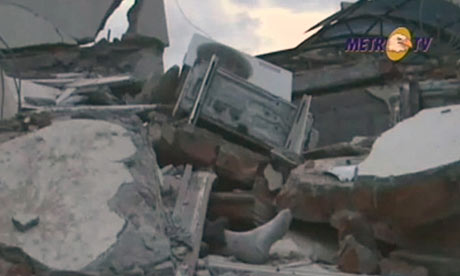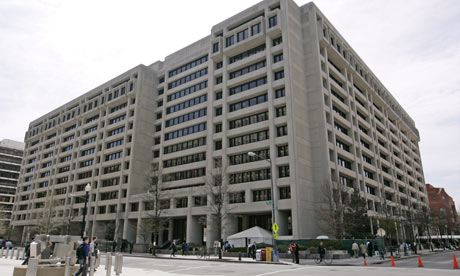As China prepares to mark 60 years of communist rule, George Walden, former diplomat, asks what exactly is the cause for celebration
By George Walden
Published: 8:30AM BST 27 Sep 2009
The communist regime in China established by Mao Zedong's 1949 revolution has succeeded, it is sometimes argued, whereas the Russians failed. That is certainly the impression a Western visitor to China might get today. Unlike in Russia the Communist Party is still in power, yet you sense an unstoppable, unfurling wave of industrial and economic power. The country is the biggest construction site the world has seen, and it has only just begun.
Vibrancy, energy, abundant consumer goods, style and hedonism are not things we associate with communist rule, but in towns you see them everywhere, from the skyscraper forests to the busy restaurants and thronged department stores, bigger and cheaper than our own.
The progress is undeniable, and the Chinese are proud of it. Just don't make the mistake, as I have once or twice, of talking to younger people about the past. Their parents do that, and it bores them.
If they are under 35 they will have no memory of the Cultural Revolution, the last fling of a manic, ageing despot, in which three million died, which I lived through as a diplomat in Beijing in the late Sixties. Still less will they wish to be reminded of the Chairman's earlier bouts of extermination through purges, political campaigns or madcap attempts to defy the laws of bourgeois economics - such as the Great Leap Forward in 1958, which as the Party itself has now admitted, to anyone interested to hear, killed 40 million.
Why is the younger generation so disinclined to look back in anger?
One reason is that Mao's brutality left China a morally eviscerated nation, which cares for little beyond material wellbeing and success. Young China has never had it so good and is determined to have it better.
Another reason is nationalism: for all his officially admitted "mistakes" there is a reluctance, not confined to the Party, to de-throne the man credited with transforming a chaotic, poverty-stricken and abject country, that had undergone a cruel Japanese occupation and horrendous civil war. Mao made China "stand up," as the communist national anthem put it.
And internationally, it did. In the Korean War, at the cost of stupendous losses, it held the Americans at bay, allied itself to Moscow to create the awesome Sino-Soviet bloc, developed its atomic bomb, and pulled enough wool over enough eyes about its often illusory domestic advance to create an influential coterie of apologists in the West.
China under Mao was in fashion with the politically chic in a way Soviet Russia never was. Even President Nixon's daughter wore a Mao badge on her visit.
All this is why many Chinese will accept the roseate account of the country's recent history the Party will present for the anniversary celebrations. For them Mao is indissolubly associated with the birth of the modern nation and the re-claiming of China's rightful place in the world.
The truth will one day emerge, but not yet. The communist anthem's call to "stand up" was directed at "people who no longer wish to be slaves." But under Maoism their lives were more slave-like than before. Schools, health, production and employment improved – until some political campaign set them back - if only because of the Party's dictatorial organisational powers. But the price of progress was not just the surrender of individual freedom, but of the human personality. Once, Mao seriously considered abolishing names and calling people by numbers.
People's lives were regimented and controlled to a degree surpassing anything in human history, in factories, communes, or even their homes, where they were watched over by zealous village or street committees. In its scope and intensity the suffering of the Chinese people in the Fifties and Sixties is unprecedented in history as well.
So to say that the Chinese revolution of 1949 has proved a success, or that it was necessary for 70 million people to die to lay the groundwork for later advances, is moral and historical nonsense.
What has succeeded is not China under Mao, but China after its break with almost everything his revolution stood for: rigid state control of the economy, centralisation, a crazed egalitarianism, closed borders, a Party that enforced its rule by a personality cult and relentless, bloody repression.
No amount of terminological juggling about socialism and Marxism-Leninism to maintain a façade of continuity can disguise the fact that China today is surging forward, thanks to a crude but dynamic mixture of corporate capitalism and uninhibited entrepreneurship. The fact that Chinese capitalism is red in tooth and claw is the only ideologically correct thing about it.
Inevitably there are winners and losers, and vast new disparities of wealth. Everywhere in Chinese cities you see some of the beneficiaries/victims drawn in from the countryside to fuel the urban economy, the hundreds of millions of
gong-min - itinerant workers earning maybe £15 for a seven day week on a building site or in a shop or restaurant.
Too poor to rent a flat they often leave their families behind, eat and sleep in on the job, and send money home. Tough as their lives are, they are better off than before. Under Mao millions starved to death. They don't now.
To an outsider the very nature of the Chinese appears to have changed.
To anyone who knew the country before and after the Chairman's death, the differences are also astounding. "My assessment of these people" said Henry Kissinger, "is that they are deeply ideological, close to fanatic in the intensity of their beliefs." So they seemed to me too, as well as being depressingly puritanical and perversely proud of their penury.
Yet in a couple of decades these dogmatists and fanatics and killjoys have produced a generation that sits around in cafes sipping expensive coffee and admiring each other's clothes.
Now that China enjoys a modicum of freedom the awesome talents of its people have begun to flourish, in finance, manufacturing, architecture, design, films and art. For all the corruption and continuing repression, the results have been infinitely more impressive than anything Mao's attempt to engineer his people's souls achieved.
Today there is more personal freedom than at any time in 60 years and the beginnings of a genuine system of law. For the first time you sense a liberation of the human spirit.
Joie de vivre is not something anyone ever associated with Maoist China, but you can see it today, in towns at least – an important qualification in a country still over 50 per cent rural, with poverty to match. Given the freedom to do so, the Chinese know how to live: to eat copiously, to dress elegantly, to laugh and let off steam, to pursue energetic love lives. For me the mere absence of the sour, venomous, resentful and xenophobic faces that filled the streets when I lived there is a tonic.
The miracle of China's recovery and the way it came about carries a message for the West. What characterises the two phases of China's history since 1949 are their extreme nature. Under Mao I saw people being forced to confess to imaginary crimes, being beaten up in the streets by hysterical Party thugs, or weeping tears of devotion to the Great Helmsman as they marched in the streets.
Now I see fantastical excesses in other forms – jungle capitalism, obscenely luxurious hotels and houses, some loopy architecture, grotesque contemporary art, ubiquitous prostitution.
Is a tendency to extremes embedded in the Chinese psyche? In their Marxism, the Chinese were even more dogmatic than the Russians in the pursuit of equality, insisting that a peasant might know more about medicine than a doctor. Now, as a convert to capitalism, China's excesses have been caricatural too, a throwback to what we would see as Victorian conditions.
Extremes are there too in the Chinese economy, whether the overnight shift from autarky under Mao to a great trading nation, or in the dizzying fluctuations of stock markets. How can a national temperament change so fast? And if things go wrong, could there be a lurch back into nationalism, which in China can have a distasteful racial flavour?
For the present there are scant signs of this, and we must hope that the more prosperous the Chinese become the more the regime will relax.
Meanwhile what merits celebration is not so much 1949 as 1978, the year that Deng Xiaoping, cruelly persecuted by the Chairman (his son was crippled) took over the reins of the economy after a period of inner-Party struggle following Mao's death two years before. It was in the succeeding years that the country really began to stand up and open up, as a stultified, introverted and poverty-stricken country overcame its calamitous past, reached out to the world - and found a welcome.
George Walden was a diplomat specialising in China and Russia. His book, China: A Wolf in the World?
is published by Gibson Square









 Under an EPA proposal, Logan International is among six of the largest US airports that would have to install deicing “pads’’ or other collection systems to contain 60 percent of fluid sprayed. (John Tlumacki/Globe Staff)
Under an EPA proposal, Logan International is among six of the largest US airports that would have to install deicing “pads’’ or other collection systems to contain 60 percent of fluid sprayed. (John Tlumacki/Globe Staff) 




 Noah Berger for The New York Times Lyndon Rive said that thanks to an influx of financing, his solar panel leasing company has hired 112 people.
Noah Berger for The New York Times Lyndon Rive said that thanks to an influx of financing, his solar panel leasing company has hired 112 people.  Mary Altaffer/AP
Mary Altaffer/AP 



